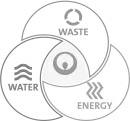During the spring and summer months, we regularly find ourselves faced with driving on wet, slippery roads. While most of us use caution when driving on wet roads, many drivers treat it like regular driving conditions. According to the National Traffic Safety Administration (NHTSA), more than 550,000 accidents, on average, occur on wet road conditions every year. While it is impossible to completely eliminate the risk of driving on wet roads, it is possible to reduce the factors that lead to such accidents. Here are some of the best safety tips available to reduce those risks.
- Slow down: It is better to drive slow and safe than fast and reckless. As you decrease your speed, your tire tread improves. If possible, avoid trying to pass other vehicles.
- Maintain a safe distance: Keep more than two vehicle lengths between you and the vehicle in front of you. It takes about three times longer to brake on wet roads than it does on dry roads.
- Know how to recover from a skid: If your vehicle does skid, remember not to slam on the brakes. If you have an anti-lock braking system (ABS), do not pump the brakes. Instead, apply firm, steady pressure to the brakes and steer the vehicle in the direction of the skid.
- Properly maintain your tires: Improperly inflated tires not only adversely affect your gas mileage, they also affect your vehicle's handling. Tires that are properly inflated and well maintained can cut through water and keep traction better than worn or bald tires. Check your tires condition and air pressure on a regular basis.
- Be careful at intersections: Accidents occur most frequently at intersections. When approaching an intersection, exercise caution during wet road conditions. Although you may be approaching slowly, other drivers around you may not be so cautious. Intersections are often made more dangerous by frequent oil spills making the stopping surface more slippery.
- Try to avoid hydroplaning: While driving in wet conditions, your tires must cut through the water to maintain contact with the road. If you are traveling too fast and there is too much water on the road, your vehicle may start to ride on top of the water, which is a condition called aquaplaning or hydroplaning. You can avoid this by keeping your tires properly inflated, maintaining deep tire treads, slowing down and driving on the tracks of the vehicle in front of you.
As drivers, we all need to change our mindset and techniques when driving in wet road conditions. Wet roads lead to slipping, skidding and hydroplaning, all of which can cause vehicle damage, personal injury or even death. By taking a few precautions and by using wet road driving techniques, you can increase your chance of staying safe.
The content in this article was provided by Alvis Violo, CEO of Emergency Road Services Corporation, a roadside assistance company dedicated to serving the trucking industry in the United States and Canada.
For more information, visit www.emergencyroadservices.com or call 1-877-377-2262. Please send your questions, feedback or comments about this column to [email protected].

Veolia is uniquely positioned to service industry, government and commercial entities in improving performance, managing water, waste and energy.
Learn how


